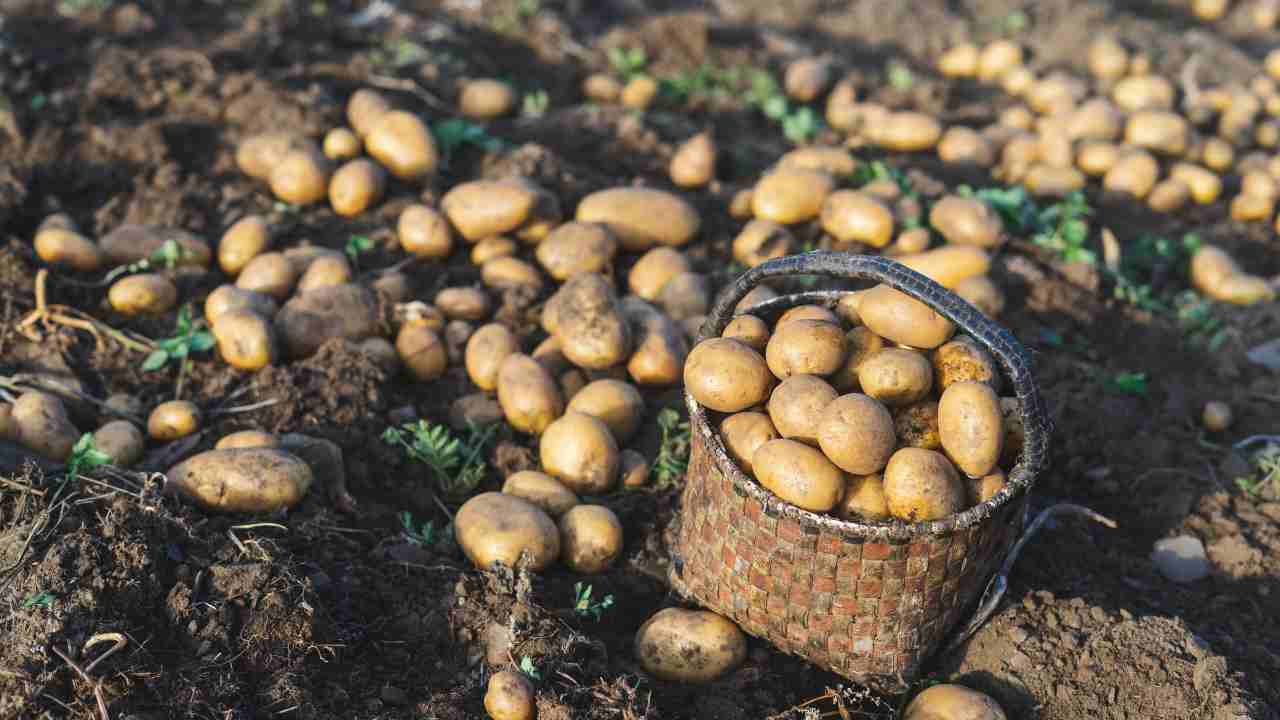Ever thought about the number of potatoes one plant can provide? This question is interesting for both experienced and new gardeners. It might change what you thought you knew.
A gardening blog shared that potato types can give different sizes. From the results of their harvest, they saw outputs between 6 to 11 ½ pounds. Kennebec was the best, and Superior was the least. Other kinds mostly hit between 8 ¾ to 9 ¾ pounds each.
The blog’s author also found a pattern in potato quality. Red potatoes gave less but bigger ones. However, Fingerlings produced many small potatoes.
Now, wonder about 6 pounds of seed potatoes? It usually leads to an average of 55 pounds in return. This ties in with the general idea of 10 pounds harvest from 1 pound of seeds.
Key Takeaways:
- The potato yield per plant can vary depending on the variety.
- The range of yields can go from 6 pounds to 11 ½ pounds per plant.
- Kennebec is a high-yielding variety, while Superior has a lower yield.
- Red varieties produce fewer but larger potatoes, while Fingerling varieties produce many small potatoes.
- On average, 6 pounds of seed potatoes can yield around 55 pounds of harvest.
Factors Affecting Potato Yield
In my research, I found something interesting about potato yield. The number of stems on a potato plant makes a big difference. There is a strong link between stem count and the number of potatoes grown.
A plant with more stems often makes more potatoes. But, these potatoes might be smaller. This could lower the overall number of good potatoes you can sell.

Plants with fewer stems make larger potatoes. This is good for farmers who want bigger potatoes. By choosing the right number of stems, farmers can meet their goals and the market’s needs.
Figuring out how many stems to aim for is smart. Doing a grow out before planting helps. It shows how many stems a plant might have. This helps farmers decide how to manage their seeds to get more potatoes.
Farmers have many ways to control stem number and potato output:
- They can change the space between plants in a row. This affects how many stems each plant grows. It also influences how big the potatoes will be.
- Keeping potato seeds at different temperatures can change how many stems they produce. This also affects the number and size of the potatoes.
- Using auxin hormone on seeds is another method. This chemical can increase or decrease stem growth. It depends on what the farmer wants.
“Understanding and managing these factors can help farmers produce more potatoes. And, grow better potato crops.”
By using these strategies, farmers can get a bigger potato harvest. They must consider and control the factors that affect potato plant yield.
How Many Potatoes from One Plant? Conclusion
The amount of potatoes you get from one plant can change. This depends on the type of potato, how many stems it has, and the conditions it grows in. Usually, you can get between 6 and 11 ½ pounds from one plant. With the right care, this amount can increase.
To get the most out of your potato plants, think about how many stems they have and the size of the potatoes. Also, consider what people like to buy. By doing this, farmers can get more potatoes and do better with their crops.
Farmers can get a lot from their potato fields by paying close attention. They should think about how many plants to have and work on getting a big harvest. Using these farming tips, they can make their crop as good as possible.
How Many Potatoes from One Plant? FAQ
How many potatoes do you get from one plant?
The number of potatoes you get from a single plant varies. It depends on the type of potato, how many stems it has, and its growing conditions. Usually, you might get between 6 to 11 ½ pounds of potatoes from one plant.
What factors affect potato yield?
The kind of potato, the number of stems, and where they grow matters for how many potatoes you get. The more stems a plant has, the more potatoes it might produce. The size of the potatoes and what people like to buy also plays a part.
How can I maximize my potato harvest?
To get more potatoes, think about how many stems your plants have and the size of the potatoes. Also, consider what people want to buy. By looking at these factors closely, you can increase the number of potatoes you grow and sell.
